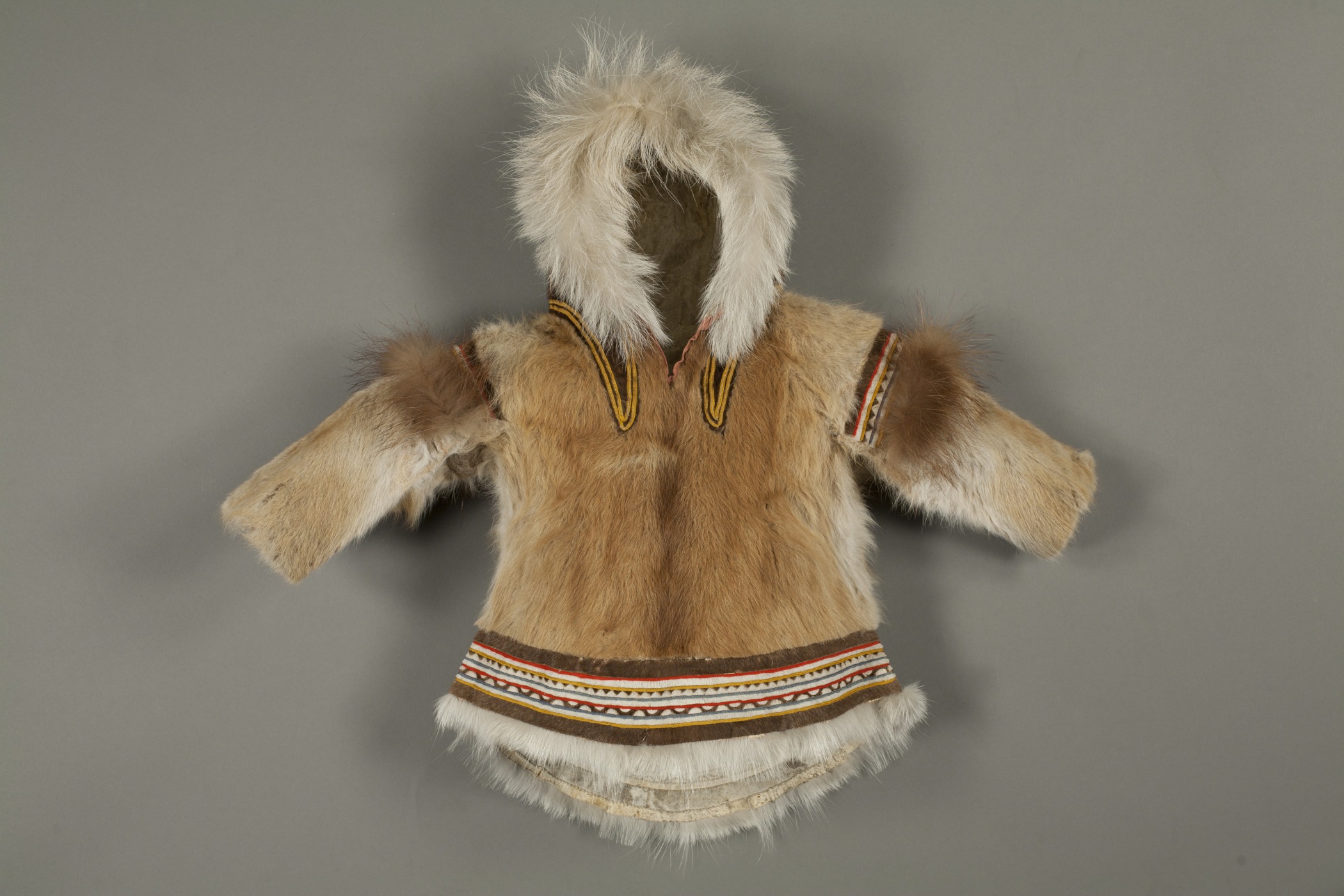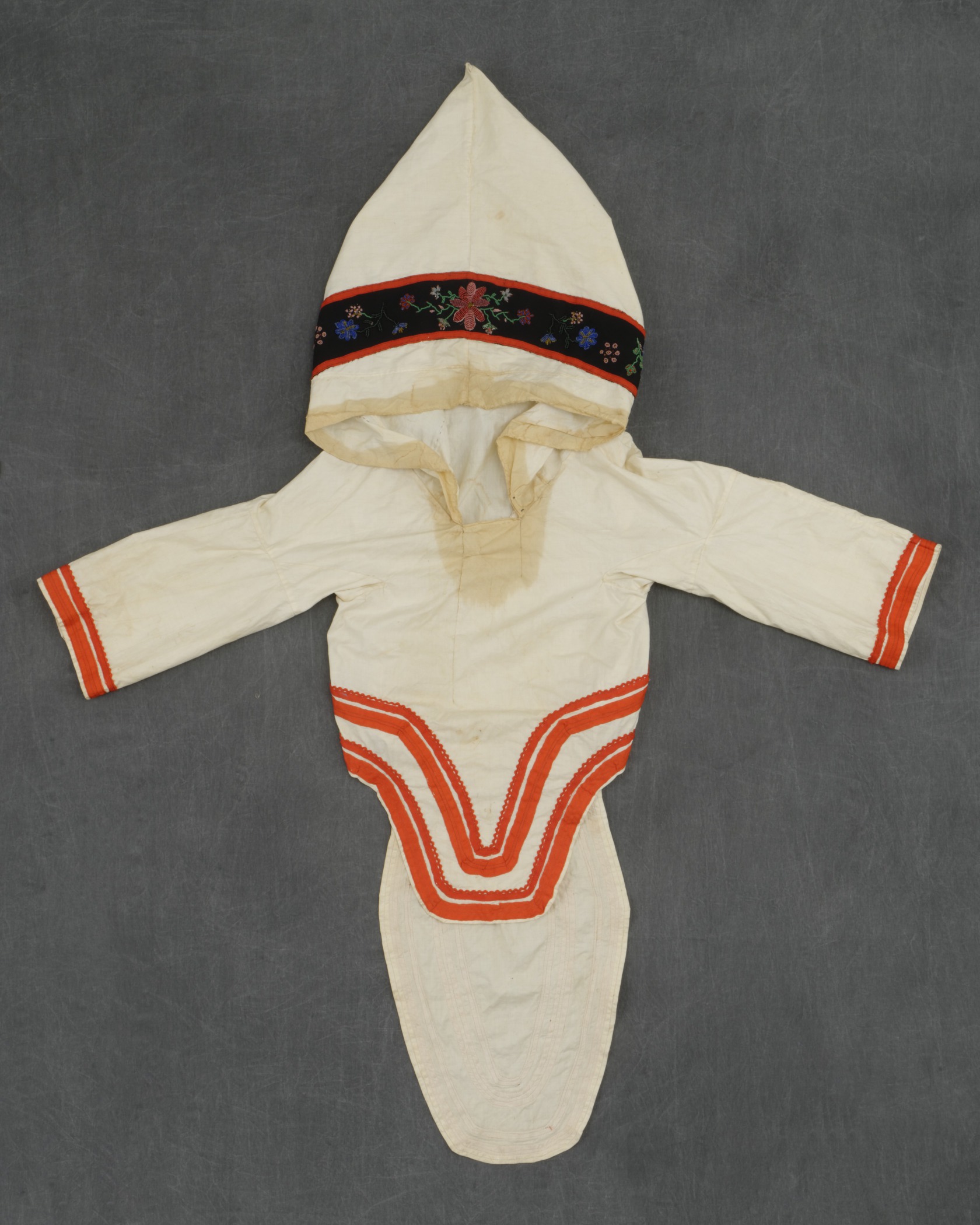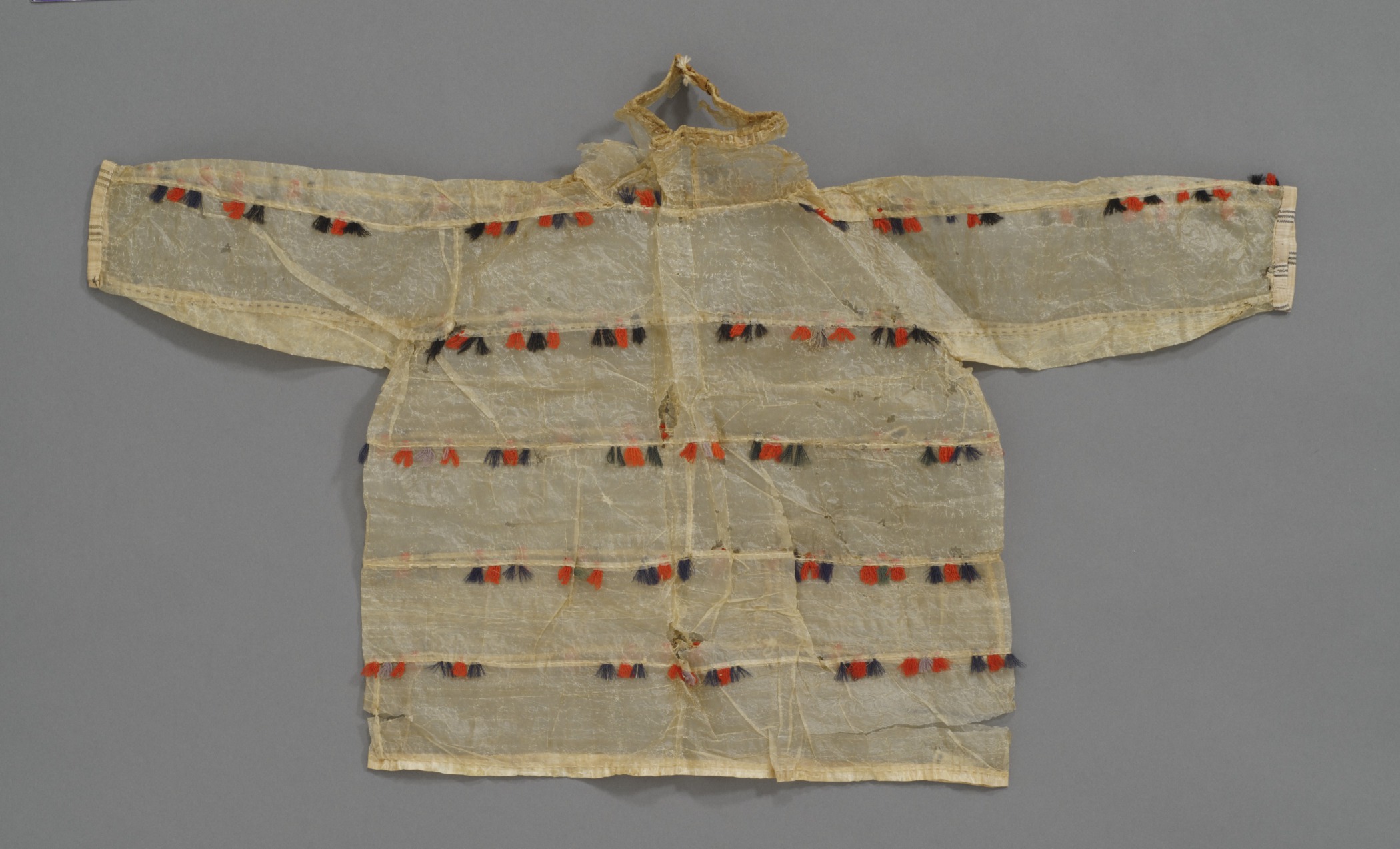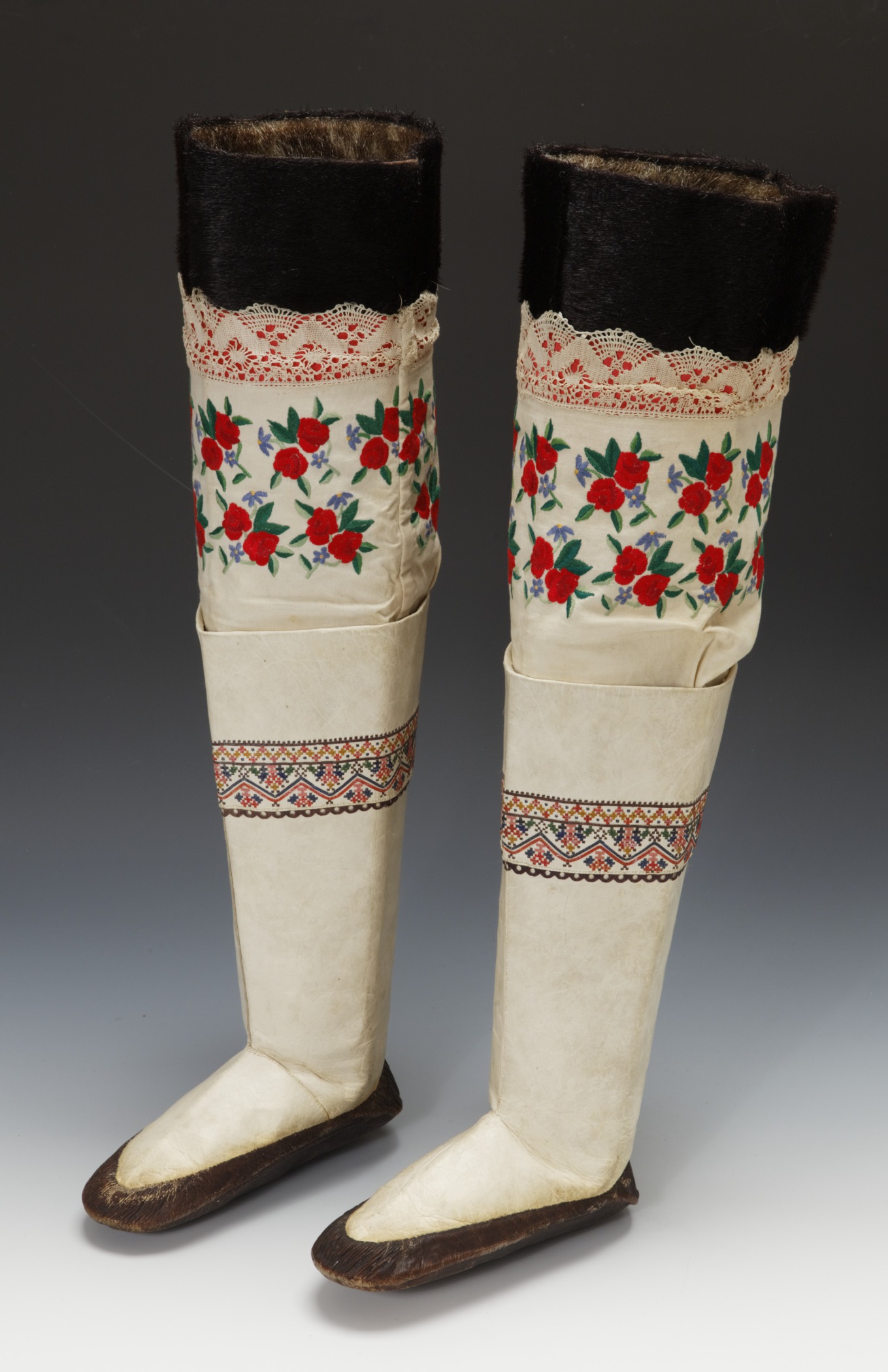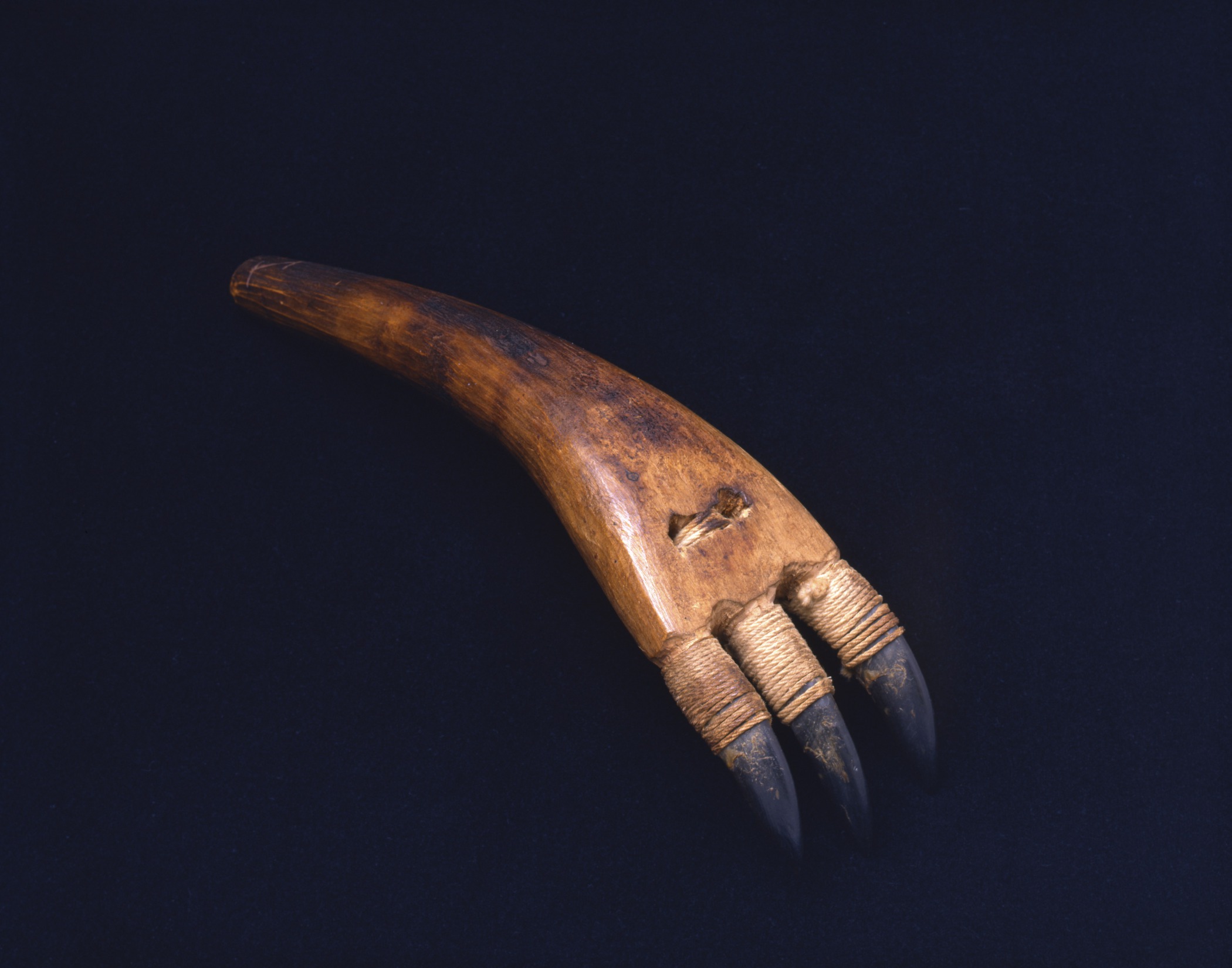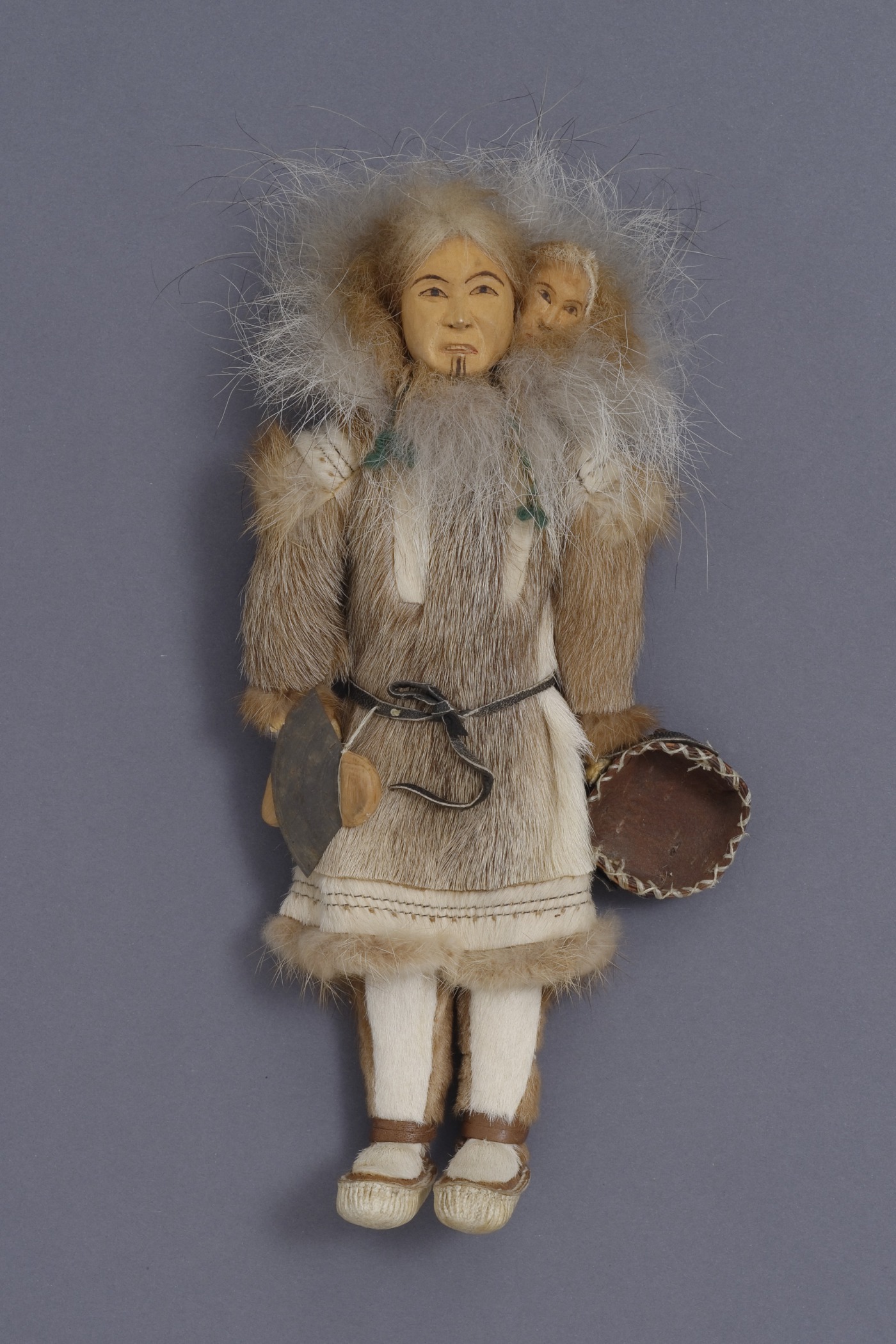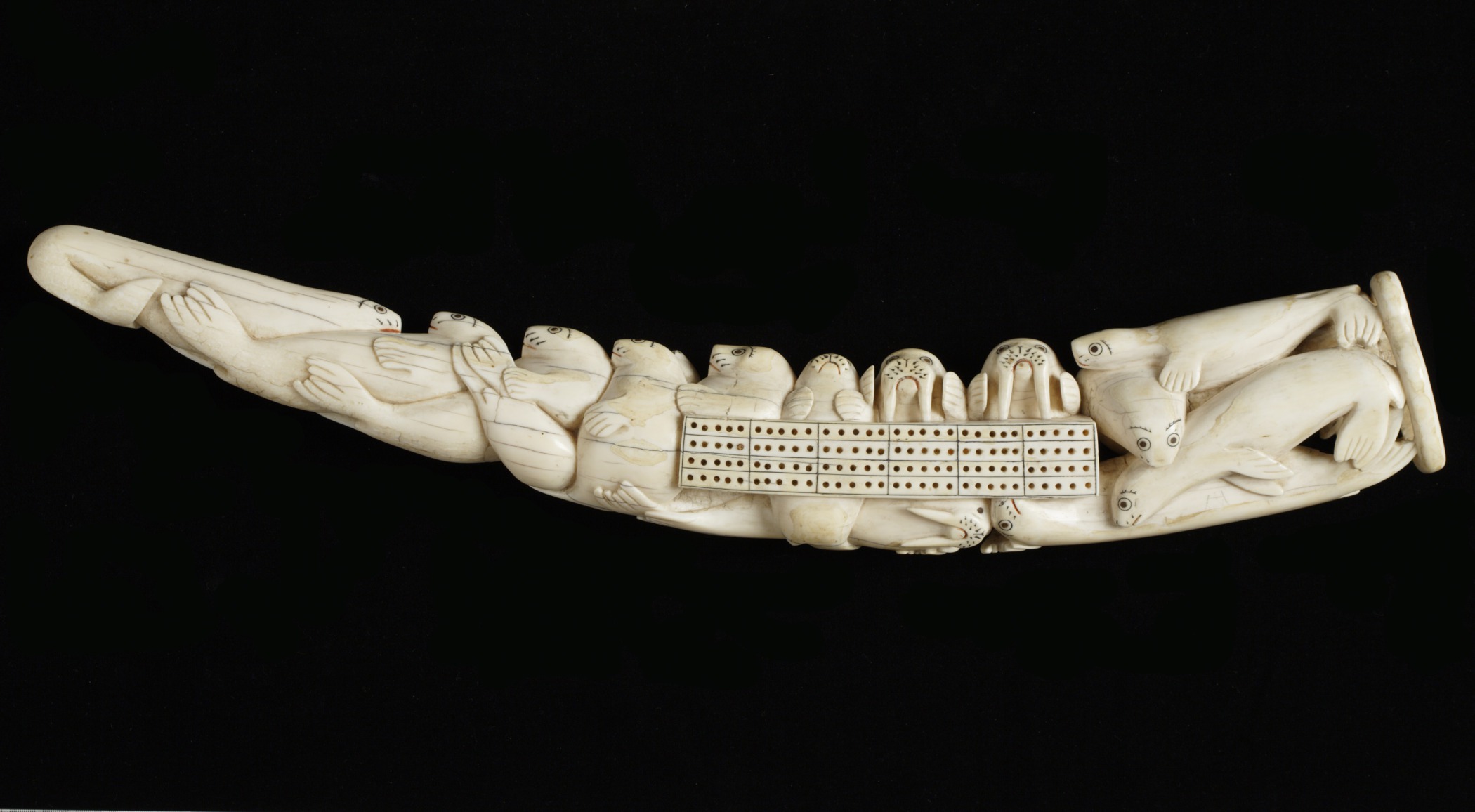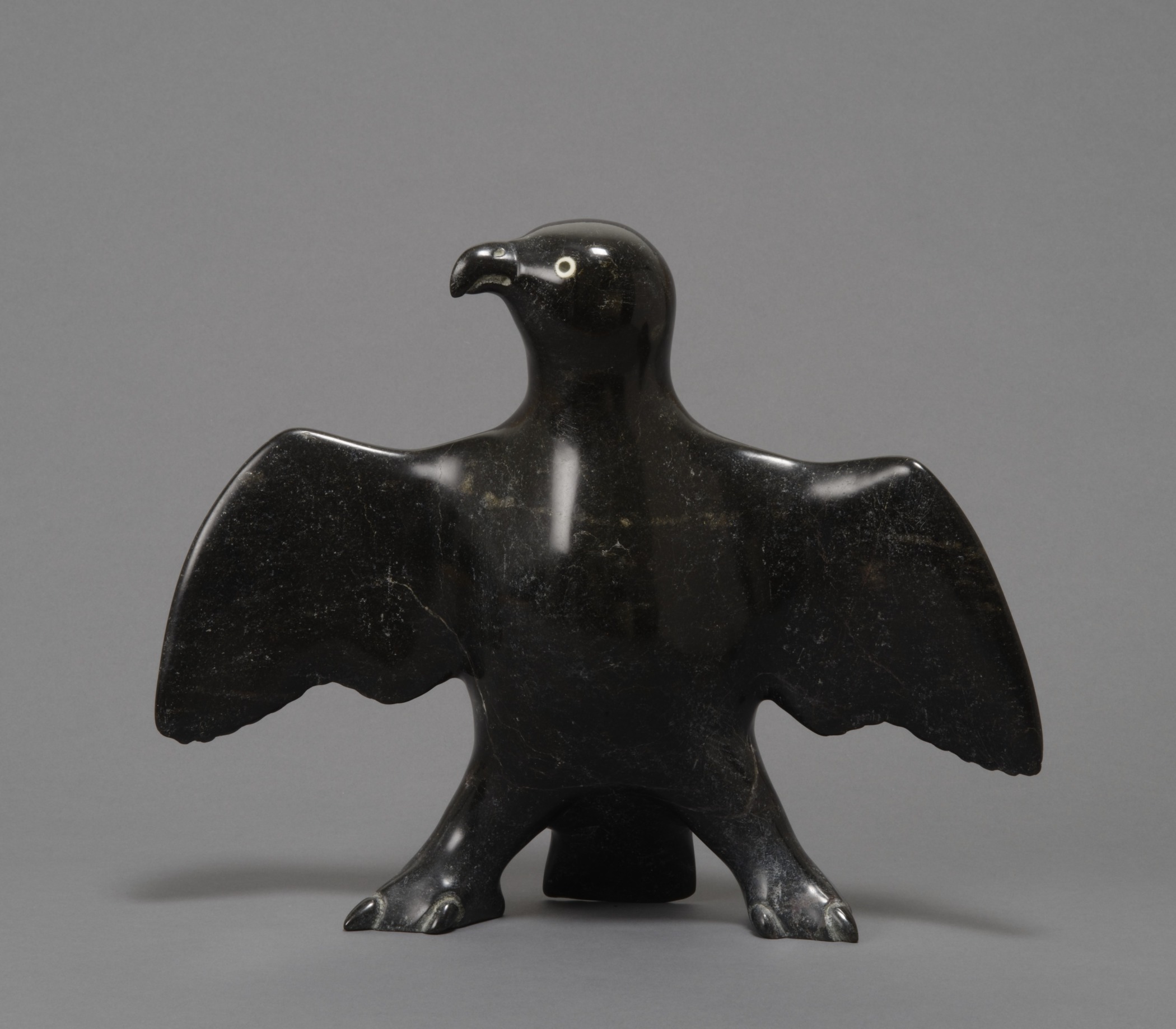Innovative protective clothing has always been essential for survival in the colder climate of the North. Women learned over thousands of years how to transform local, natural materials into warm, waterproof clothing for their families. They used sinew, thread made from tough fibrous tissue, to sew the hides and fur of seals, polar bears, caribou, and other mammals; fish skin and feathers; and even intestines into parkas, boots, mittens, and leggings. They embellished clothing by sewing together contrasting animal pelts or attaching tufts of fur, ivory, shells, or small animal bones. Some clothing designs indicated where a person was from or their status in the community.
After indigenous groups made contact with Europeans, cloth, embroidery floss, and ribbon became available. At first they used these trade goods only as embellishment on winter wear, because traditional fur clothing was superior to anything made by Europeans. Women sometimes adopted new styles, like the structure of Western-style coats and hats, but made them out of animal hides or intestine. They adopted new, breathable cloth fabric for warm-weather clothing, however, because it was more comfortable than hides during the summer months.
Today, many indigenous people wear non-native clothing for their everyday lives. Artisans still create traditional clothing in order to preserve ancestral knowledge, for use when spending time out on the land, or to wear for special occasions and gatherings. The act of creating and wearing traditional clothing celebrates cultural identity and individual expression, and connects the maker and the wearer to their past and present communities.


